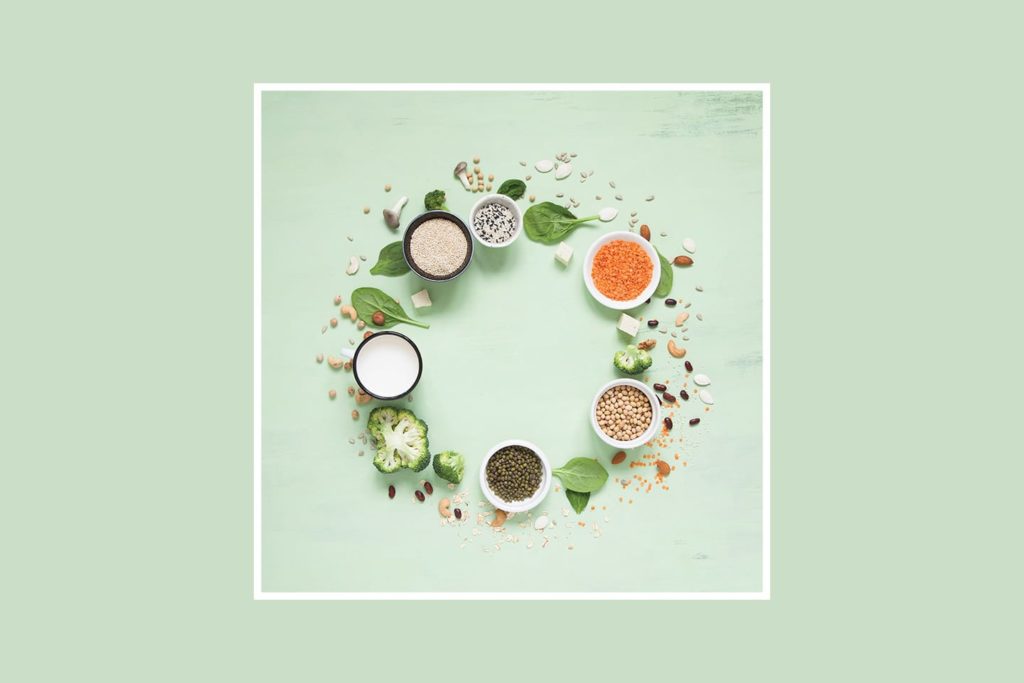How to Rethink Your Protein Sources
A varied plant-based diet can truly deliver on the protein front.
If you associate protein with chicken and steak, it may be time to rethink your protein sources. A varied plant-based diet can truly deliver on the protein front – without the cholesterol and fat that meat often provides. Plus, by upping your plant protein, you should notice a positive change in your health and your grocery bill!
What is protein?
Like carbohydrates and fat, protein is a core macronutrient, but unlike them, the body doesn’t store it – which means it’s important to take in protein throughout the day. Your body uses protein to repair tissue, build muscle, and make vital chemicals like enzymes and hormones, all while curbing your hunger.

Are you getting enough protein?
In our meat-centric country, consuming adequate amounts of protein is not a problem. Adult women need at least 46 grams of protein a day, and the average chicken breast alone contains over 30! Of course, how much protein you actually need depends on several factors, including your age, size, activity level and fitness goals, and whether or not you’re eating for two. Talk with your doctor to determine how much protein you should be consuming for your lifestyle.
For vegans and vegetarians, or those focusing on a more plant-based diet, getting enough protein requires a little creativity and knowledge of wholesome, meatless protein sources. Fortunately, when eating a combination of the following foods, meeting your daily requirement should be a breeze.
Legumes
Perhaps the most recognized source of plant protein, legumes like lentils, black beans, pinto beans, and chickpeas ought to be a staple in your diet. In addition to their numerous health benefits, cooked lentils provide a whopping 18 grams of protein per cup, while beans range from 12 to 14 grams of protein per cup. Inexpensive and versatile, beans can be incorporated into soups, tacos, curries, salads, and more. Another legume, soybeans, is used to make tofu and tempeh – both high-protein meat alternatives.
Whole Grains
Whole grains like farro, spelt, and oats are known for their high fiber content, but you can also use them to meet your daily protein requirement! Boil up a batch of grains at the beginning of the week, and pair with your meals for energy and prolonged satiety. Protein-packed quinoa, while technically a seed, is often lumped into the grain category because it’s used and prepared like a grain; at eight grams of protein per cup, this nutritional powerhouse can be added to salads, chili, and veggie burger patties for extra fuel.
Nuts and Seeds
At seven grams of protein per serving, peanuts reign supreme in protein content, followed closely by almonds, pistachios, and cashews. Nuts make for a healthy and satisfying portable snack, and their nut butter varieties can add a spoonful of protein to your morning toast. In the same family, seeds like chia seeds and hemp seeds pack a solid protein punch; sprinkle them in smoothies and oatmeal for an effortless boost.
Nutritional Yeast
A favorite in vegan cooking, nutritional yeast has become a kitchen essential in recent years. These powdery flakes work wonders as a cheese substitute, and at eight grams of protein per 1/4 cup serving, they’ll provide a high-quality dose of protein to any dish. Try the flakes on popcorn, pasta, pesto, or eggs to bump up the flavor and nutrition.
Vegetables
Popeye may have been on to something with all that spinach! Vegetables like broccoli, Brussels sprouts, kale, and spinach contain two or three grams of protein per serving, proving to be a modest, but important, source of protein.
Eating more plant-based protein provides some incredible health benefits – just ask these local ladies! Here, they share their experiences and tips for incorporating more plant foods into your diet.







